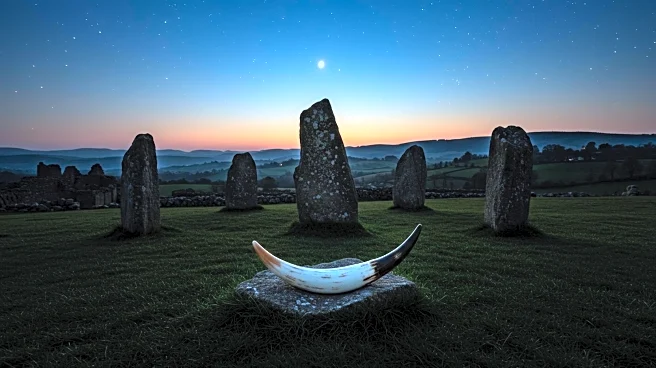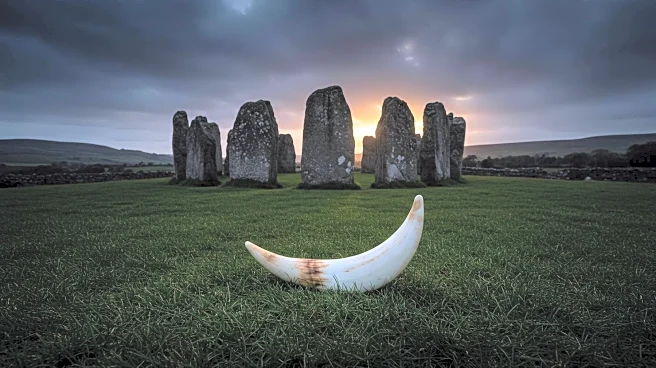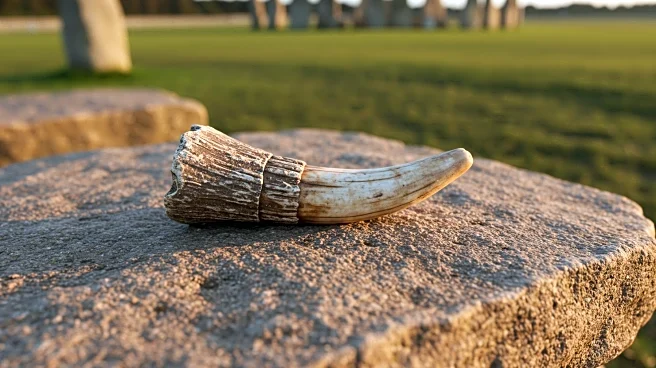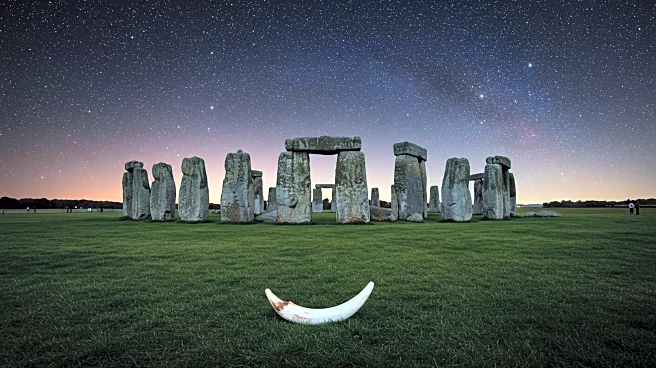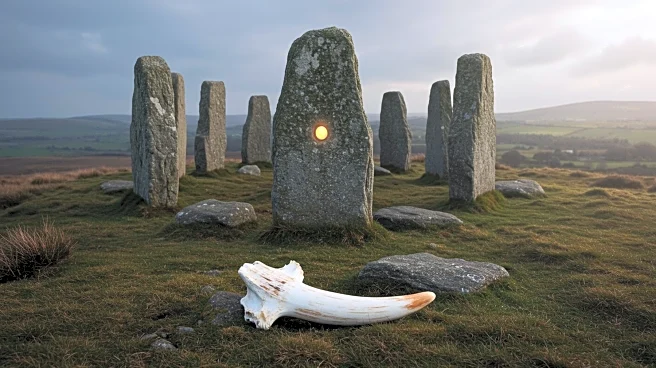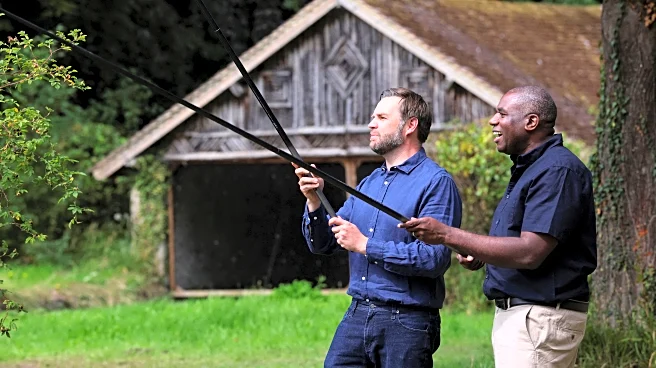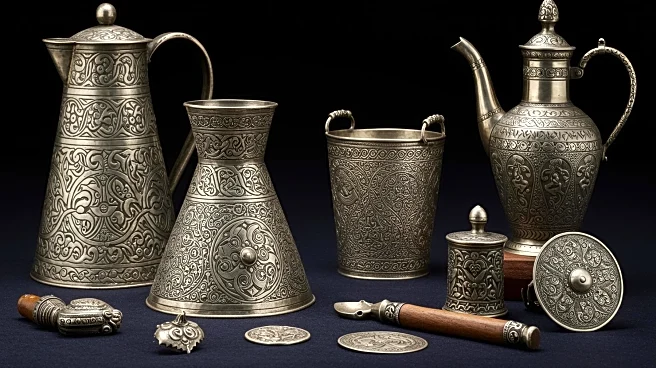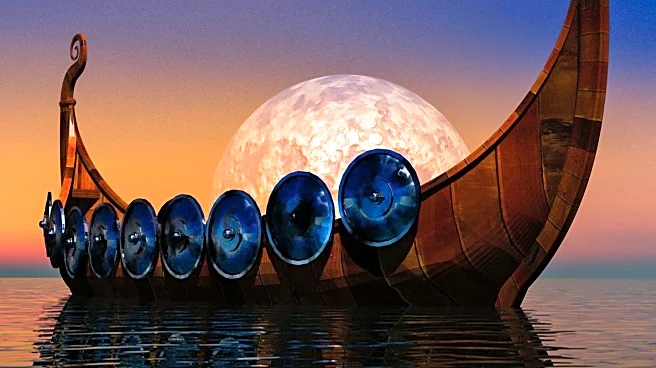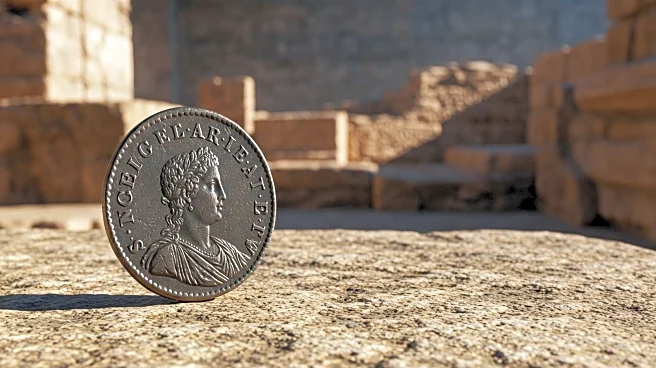What is the story about?
What's Happening?
Recent scientific analysis of a Neolithic cow's tooth found at Stonehenge has provided new evidence linking cattle remains at the site to Wales. The tooth, discovered near the monument's south entrance in 1924, was examined by researchers from the British Geological Survey, Cardiff University, and University College London. By slicing the tooth into sections, scientists analyzed its diet, environment, and movement, revealing connections to the Palaeozoic rock typical of Wales. This supports theories that cattle may have been used to transport the bluestone megaliths to Stonehenge, rather than humans dragging them. The study builds on previous research from 2018, which suggested oxen were used as beasts of burden during the Neolithic period.
Why It's Important?
The findings offer a fresh perspective on the construction of Stonehenge, challenging long-held beliefs about the monument's origins. By suggesting that cattle played a significant role in transporting the stones, the study highlights the importance of animal labor in ancient engineering feats. This could reshape our understanding of Neolithic societies and their capabilities, emphasizing the interconnectedness of regions like Wales and Stonehenge. The research also contributes to broader archaeological discussions about the movement and trade of materials across prehistoric Britain, potentially influencing future studies on ancient transportation methods.
What's Next?
Further research is expected to explore the implications of these findings, potentially leading to new archaeological investigations at Stonehenge and surrounding areas. Scientists may focus on uncovering additional evidence of cattle usage in Neolithic construction projects, which could provide deeper insights into the social and economic structures of the time. Additionally, the study may prompt a reevaluation of other ancient sites, considering the role of animals in their development. Collaboration between archaeologists and historians will likely continue to expand our understanding of prehistoric Britain.
AI Generated Content
Do you find this article useful?
